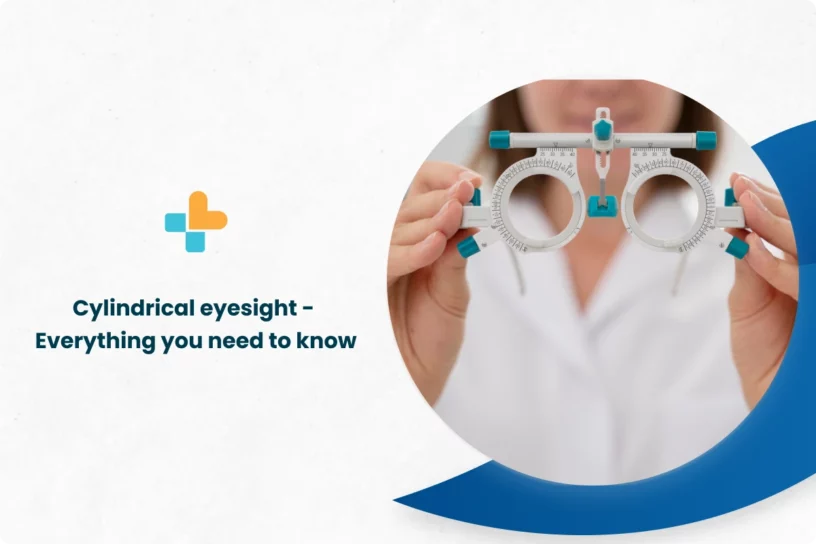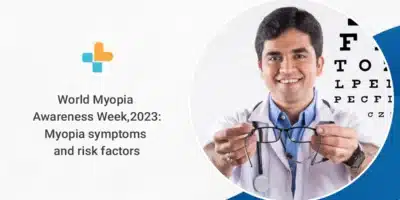Introduction:
Cylindrical eyesight, also known as astigmatism, is a common condition that affects the way the eye focuses light. Astigmatism occurs when the cornea, the clear front surface of the eye, is not evenly curved, causing light to be refracted, or bent, in different directions. This can lead to distorted or blurred vision. In this article, we will explore the problem of cylindrical eyesight, including the symptoms, causes, and treatment options available.
Cylindrical Eyesight Problem:
Cylindrical eyesight is a type of refractive error, which means that the eye has difficulty focusing light properly. This results in distorted or blurred vision, which can be especially noticeable when trying to read or see distant objects. Cylindrical eyesight can also cause headaches, eye strain, and fatigue.
Symptoms of Cylindrical Eyesight:
The most common symptoms of cylindrical eyesight include blurred or distorted vision, difficulty seeing at night, and the need to squint or close one eye to see clearly. Other symptoms include eye strain, headaches, and fatigue.
Causes of Cylindrical Eyesight:
Astigmatism is caused by an irregular shape of the cornea or lens of the eye. In most cases, this irregular shape is present at birth, but it can also develop later in life as a result of injury or disease. Astigmatism can also be inherited, and certain conditions such as keratoconus can cause it to worsen over time.
Is Cylindrical Power Harmful?
Cylindrical power itself is not harmful, but it can cause symptoms such as headaches, eye strain, and fatigue. If left untreated, it can also lead to amblyopia, or “lazy eye” and diplopia (double vision). These vision problems can affect a person’s quality of life, so it is important to seek treatment if you experience symptoms of cylindrical eyesight.
Who Is at Risk for Cylindrical Eyesight?
Astigmatism affects people of all ages, but it is more common in children and adults who are nearsighted or farsighted. It is also more common in people with a family history of the condition.
How Does the Eye Power Increase?
The power of the eye can increase as a result of a number of factors, including changes in the shape of the eye due to injury or disease, changes in the curvature of the lens, and the aging process.
Treatment for Cylindrical Eyesight:
There are several treatment options available for cylindrical eyesight, including corrective lenses and refractive surgery.
1. Corrective Lenses:
Corrective lenses, such as glasses or contact lenses, can be prescribed to correct the refractive error caused by cylindrical eyesight. These lenses are specially designed to bend light in a way that compensates for the irregular shape of the eye, resulting in clearer vision.
2. Refractive Surgery:
Refractive surgery is another treatment option for cylindrical eyesight. This type of surgery involves reshaping the cornea or lens of the eye to correct the refractive error. Procedures such as LASIK and PRK can be used to treat astigmatism.
Tips:
-Wearing UV-protected sunglasses to protect your eyes from the sun’s harmful rays
-Regular eye exams to detect and monitor any changes in your vision
-Taking regular breaks when working on a computer or reading for extended periods of time
-Using proper lighting when reading or working
Diet:
Eating a healthy diet rich in vitamins, minerals, and antioxidants can also help to reduce the power of cylindrical eyesight. Foods such as leafy greens, fish, and nuts are rich in nutrients that can support eye health. Additionally, staying hydrated by drinking plenty of water can also be beneficial for the eyes.
It’s important to note that these tips and diet can reduce the power of cylindrical eyesight, but it is not a substitute for professional treatment. If you have symptoms of cylindrical eyesight, it is important to see an eye doctor for a proper diagnosis and treatment plan. With the right treatment, it is possible to improve your vision and reduce the symptoms of cylindrical eyesight.
FAQs:
- Can cylindrical power be corrected naturally?
Cylindrical power can be corrected through various methods such as glasses, contact lenses, and refractive surgery. However, there is no natural way to correct it.
2. Is it necessary to wear glasses for cylindrical power?
It depends on the individual’s needs and the severity of their cylindrical power. Some people may not experience any symptoms and may not need glasses, while others may require glasses or contact lenses to correct their vision.
3. How to reduce cylindrical power?
The most effective way to reduce cylindrical power is through refractive surgery such as LASIK or PRK. However, it is always best to consult with an ophthalmologist to determine the best course of treatment.
4. Does cylindrical power increase with age?
Cylindrical power can change over time and may increase or decrease with age. Regular eye exams are important to monitor changes in vision and make any necessary adjustments to glasses or contact lens prescriptions.
Get in touch with Ayu Health at +91 636-610-0800 or book an appointment on our website.
Our Hospital Locations
Ophthalmology Surgery Hospitals in Chandigarh | Ophthalmology Surgery Hospitals in Bangalore | Ophthalmology Surgery Hospitals in Jaipur | Ophthalmology Surgery Hospitals in NCR | Ophthalmology Surgery Hospitals in Hyderabad
Our Doctors
Ophthalmology Surgery Doctors in Chandigarh | Ophthalmology Surgery Doctors in Bangalore | Ophthalmology Surgery Doctors in Jaipur | Ophthalmology Surgery Doctors in NCR | Ophthalmology Surgery Doctors in Hyderabad
About the Author

Dr. S. Goel
Dr. S. Goel is a renowned Internal Medicine Specialist currently practicing at Ayu Health, Bangalore. He is a Specialist in Internal Medicine, Diabetes HTN, Paediatric Care, and Family Medicine.




